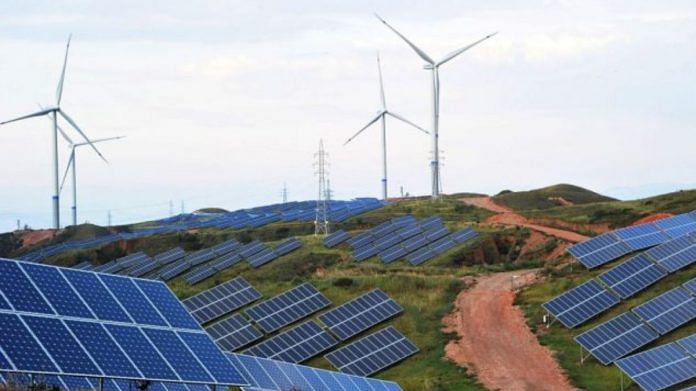India is the world’s sixth largest economy. By 2030, it’s predicted to have moved up to number three. But a new report says that unless there is a green energy revolution, India will also become a major source of global CO2 emissions.
Already the world’s third largest producer of CO2, India accounted for 7% of the global total in 2018. Although its emissions are lower than China (28% of global emissions) and the United States (15%), it remains heavily reliant on coal to generate electricity.
Over 80% of its electricity comes from burning coal, oil and biomass, according to a new report from the International Energy Agency (IEA).
Energy use has doubled since 2000, and power generation currently accounts for more than half of the country’s CO2 emissions. The IEA predicts that the growth in India’s demand for energy will outpace any other nation until at least 2040.
And it’s not just economic growth that’s driving India’s energy demand. The IEA says the country will be home to 270 million more people over the next 20 years. Housing this growing population will increase demand on carbon-intensive industries like cement and steel.
More solar needed
Solar energy currently accounts for just 4% of India’s power generation. The IEA says India will need to spend $1.4 trillion over the next 20 years to make its energy supply sustainable – that’s 70% more than provided in current government policy planning.
Domestic oil and gas supplies will be unable to keep pace with growing demand and the report warns that price and market volatility could cause India problems unless it switches to a green energy future.
Big infrastructure and machinery investments will be needed to deliver India’s rapid economic growth and the IEA says this must be sustainable, otherwise the new equipment could account for 60% of all emissions by the late 2030s.
Remarkable progress
Despite the challenges, India’s achievements to date have been impressive, says the IEA, citing a successful campaign to promote the use of highly efficient LED lighting by most households.
“India has made remarkable progress in recent years, bringing electricity connections to hundreds of millions of people and impressively scaling up the use of renewable energy, particularly solar,” said IEA Executive Director Dr Fatih Birol.
Despite the growth of renewable energy, many consumers still face unreliable electricity supplies and over 600 million people still use firewood for cooking. The IEA says reliable power supplies are also key to reducing India’s chronic levels of air pollution.
A potential world leader
“India will soon become the world’s most populous country, adding the equivalent of a city the size of Los Angeles to its urban population each year,” the report says. “To meet growth in electricity demand over the next 20 years, India will need to add a power system the size of the European Union to what it has now.”
The report expects India to emerge as a leader in renewable energy technology and it predicts that one in seven of the dollars spent globally on solar PV, wind turbine and lithium-ion battery storage will be going to Indian companies by 2040.
In the World Economic Forum’s Energy Transition Index 2020, India, which was ranked 74th out of the 115 nations studied, was singled out as one of only 11 nations to have made “consistent and measurable progress on their energy transition over the past six years”.
This article was originally published in the World Economic Forum.
Also read: Adani-Total deal a sign — foreign investors see India’s market potential for green energy






